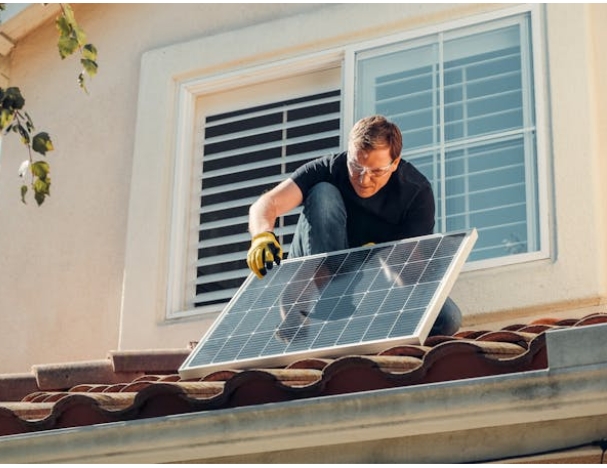Everyone’s talking about solar panels these days, and for a good reason. They can save you money and help the planet at the same time. If you live in an older home, you might think it’s too late to get in on the action, but it’s actually a great opportunity. Retrofitting older homes with solar panels is not just doable; it’s a smart move. Plus, we’ll get a quote from Soly, a leading expert in solar energy, to hear why they think it’s a game-changer.
Assessing Home Suitability for Solar Panels
Not every home is perfect for solar right off the bat. First, a pro needs to check out your roof. They’ll look at its age, what it’s made of, its shape, and how strong it is. The best spot for solar panels is where they get lots of sun, so the pro will also check how much shade covers your house. They’ll also consider your local weather because too much rain or snow can affect how well solar panels work.
Regulatory and Legal Considerations
Before you start putting up any solar panels, you gotta know the rules. Different places have different building codes and might need special permits for solar. Also, there are some cool incentives and tax breaks that can make solar more affordable. It’s worth checking these out because they can knock a chunk off the upfront costs, making solar a better deal.
Choosing the Right Solar Technology
Picking the right technology is key to getting the most out of your solar panels. We’ll compare the different types of panels and tech out there so you can find the best fit for your home. This includes figuring out the best kind of inverter and whether you need a battery system to store energy for when the sun isn’t shining. It’s all about making sure your setup works smoothly with the electric system you’ve already got.
Installation Process
When you decide to go solar, selecting a reliable and reputable company is crucial to ensure a smooth and successful installation. Here’s a detailed look at what you should expect and the steps involved in the installation process:
Choosing a Solar Provider: Start by researching local solar companies. Look for providers with solid reviews, certifications, and a history of successful installations. Check if they offer comprehensive services, including consultation, design, installation, and maintenance. It’s also beneficial to select a company that provides warranties and has a responsive customer service team.
Initial Consultation and Site Assessment: After choosing a provider, the first step is an initial consultation. A representative will visit your home to assess its suitability for solar power. They will evaluate factors like roof condition, orientation, and shading. This step ensures that your home can support solar panels and helps the company create a tailored plan for your specific needs.
System Design and Proposal: Based on the site assessment, the solar company will design a system that maximizes efficiency and meets your energy needs. They will present you with a detailed proposal outlining the system’s specifications, expected energy output, installation timeline, and cost. Make sure to review this proposal thoroughly and ask any questions you might have.
Permitting and Approvals: Before installation can begin, the necessary permits and approvals must be obtained. Your solar provider will handle this process, submitting the required paperwork to local government authorities and your utility company. This step can take a few weeks, but it’s essential for ensuring compliance with local regulations and grid connection standards.
Maintenance and Upkeep
Good news—solar panels are known for their durability and low maintenance requirements. However, to ensure they operate at peak efficiency, some regular upkeep is necessary. Here’s how to keep your solar setup running smoothly:
Regular Cleaning: Dust, dirt, and debris can accumulate on your solar panels over time, reducing their efficiency. Depending on your location, you may need to clean your panels a few times a year. Use a hose or a soft brush to gently remove any buildup. Avoid harsh chemicals or abrasive materials that could damage the panels.
Visual Inspections: Periodically check your solar panels for any signs of damage or wear. Look for cracks, loose wiring, or any other issues that might affect performance. If you notice anything unusual, contact your solar provider for a professional inspection and repair.
Monitoring System Performance: Use the monitoring software provided by your solar company to keep an eye on your system’s performance. This software can alert you to any drops in energy production or other issues that need attention. Staying proactive can help you address problems before they become significant.
Professional Maintenance: While solar panels require minimal maintenance, it’s a good idea to schedule a professional check-up every few years. A technician can thoroughly inspect the system, clean hard-to-reach areas, and ensure all components are functioning correctly.
In Conclusion
Retrofitting your older home with solar panels isn’t just a trendy move—it’s a smart investment in your home and the planet. While it might seem like a big step, the benefits last for years. You’ll cut down on your electric bills, and you’ll be doing your part to reduce your home’s environmental footprint. Remember, every home can contribute to a greener planet, and starting with solar panels is one of the best ways to make a difference. Ready to catch some rays? Let’s make your old home new again with the power of the sun!
